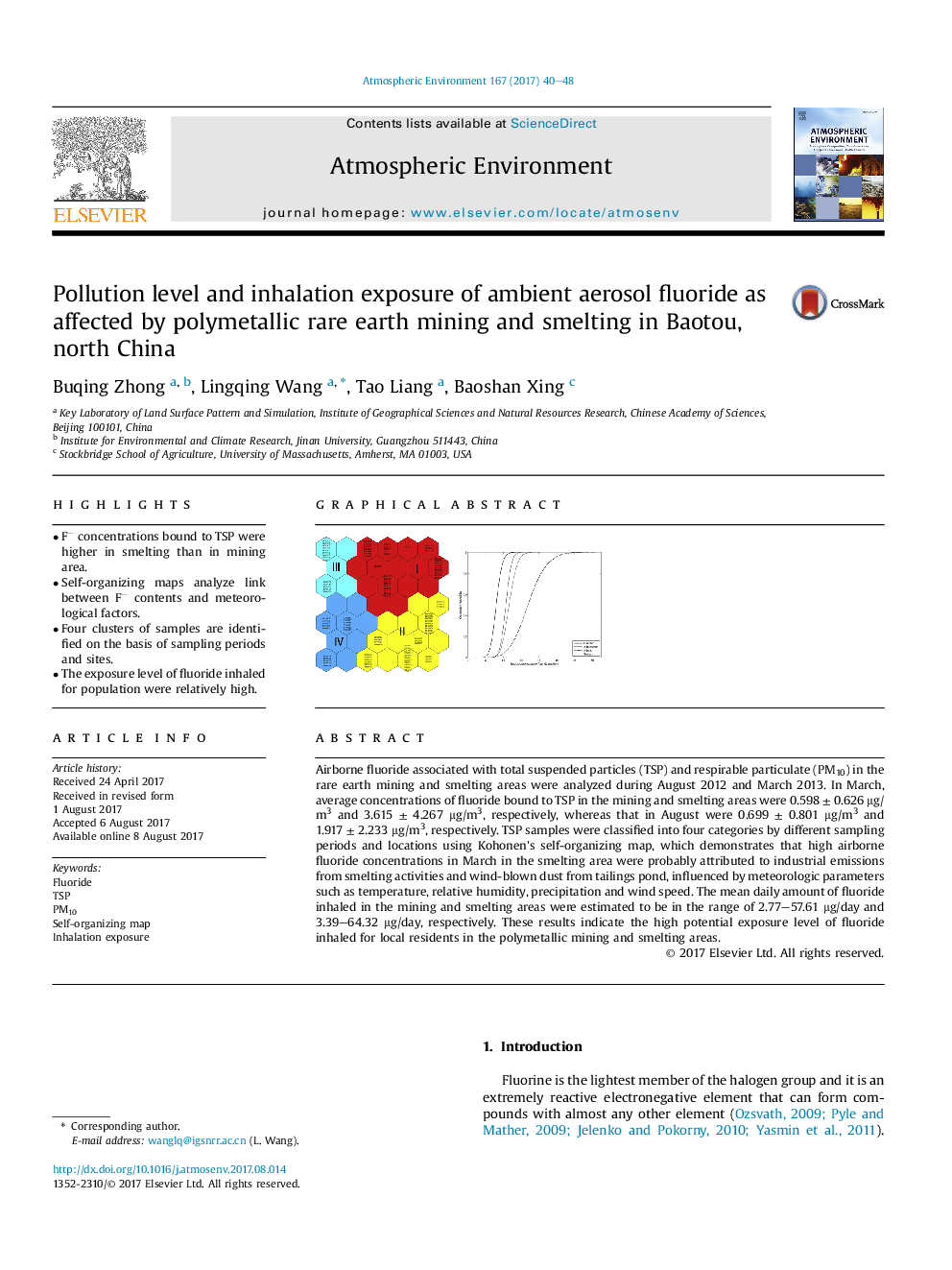| Article ID | Journal | Published Year | Pages | File Type |
|---|---|---|---|---|
| 5753050 | Atmospheric Environment | 2017 | 9 Pages |
â¢Fâ concentrations bound to TSP were higher in smelting than in mining area.â¢Self-organizing maps analyze link between Fâ contents and meteorological factors.â¢Four clusters of samples are identified on the basis of sampling periods and sites.â¢The exposure level of fluoride inhaled for population were relatively high.
Airborne fluoride associated with total suspended particles (TSP) and respirable particulate (PM10) in the rare earth mining and smelting areas were analyzed during August 2012 and March 2013. In March, average concentrations of fluoride bound to TSP in the mining and smelting areas were 0.598 ± 0.626 μg/m3 and 3.615 ± 4.267 μg/m3, respectively, whereas that in August were 0.699 ± 0.801 μg/m3 and 1.917 ± 2.233 μg/m3, respectively. TSP samples were classified into four categories by different sampling periods and locations using Kohonen's self-organizing map, which demonstrates that high airborne fluoride concentrations in March in the smelting area were probably attributed to industrial emissions from smelting activities and wind-blown dust from tailings pond, influenced by meteorologic parameters such as temperature, relative humidity, precipitation and wind speed. The mean daily amount of fluoride inhaled in the mining and smelting areas were estimated to be in the range of 2.77-57.61 μg/day and 3.39-64.32 μg/day, respectively. These results indicate the high potential exposure level of fluoride inhaled for local residents in the polymetallic mining and smelting areas.
Graphical abstractDownload high-res image (269KB)Download full-size image
